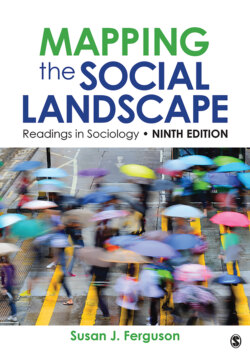Читать книгу Mapping the Social Landscape - Группа авторов - Страница 111
На сайте Литреса книга снята с продажи.
Using Racial and Ethnic Concepts to Define Others
ОглавлениеWe observed many examples of children exploring the complex notions of skin color, hair differences, and facial characteristics. They often explore what these things mean and make racial and/or ethnic interpretations of these perceived differences. Mindy (4: White) insists that Debi is Indian. When queried, Mindy replies that it is because Debi is wearing her long dark hair in a braid. When Debi explains that she is not Indian, the child remarks that maybe Debi’s mother is Indian.
These statements show not only awareness of the visible characteristics of race and ethnicity but also insight into how visible markers are passed from generation to generation. They demonstrate a child’s ability to grasp salient characteristics of a racial and/or ethnic category not her own and apply them to others in a collaborative and evolving way.
In another episode, Taleshia (3: Black) approaches the handpainting table. Asked if she wants to make a handprint, she nods shyly. A child with dark brown skin, Taleshia scans the paint bottles and points to pale pink. Curious about her preference, Debi asks, Taleshia, is this the color that looks like you? Taleshia nods and holds out her hand. Behind her, Cathie (3.5: White) objects to Taleshia’s decision. No, no, Cathie interjects. She’s not that color. She’s brown. Cathie moves to the table. You’re this color, Cathie says and picks out the bottle of dark brown paint. Cathie is interested in helping Taleshia correct her apparent mistake about skin color. Do you want this color? Debi asks Taleshia. No, she replies, I want this one, touching the pink bottle. Regarding Taleshia with amazement, Cathie exclaims, For goodness sake, can’t you see that you aren’t pink? Debi, Cathie continues to insist, you have to make her see that she’s brown. Cathie is exasperated and takes Taleshia by the arm. Look, she instructs, you are brown! See? Cathie holds Taleshia’s arm next to her own. I am pink, right? Cathie looks to Debi for confirmation. Sure enough, Debi answers, you are pink. Now, Cathie continues, looking relieved, Taleshia needs to be brown. Debi looks at Taleshia, who is now frowning, and asks her, Do you want to be brown? She shakes her head vigorously and points to pale pink. I want that color.
Cathie is frustrated, and trying to be supportive, Debi explains that Taleshia can choose any color she thinks is right. Cathie again objects, but Taleshia smiles, and Debi paints her palm pink. Then Taleshia makes her handprint. Cathie stares, apparently convinced that Taleshia and Debi have lost touch with reality. As Taleshia leaves, Cathie takes her place, remarking to Debi, I just don’t know what’s the matter with you. Couldn’t you see that she is brown! Cathie gives up and chooses pale pink for herself, a close match. Cathie makes her handprint and says to Debi. See, I am not brown.
Taleshia stuck to her choice despite Cathie’s insistence. Both three year-olds demonstrate a strong awareness of the importance of skin color, and their views are strongly held. This example underscores the importance of child-centered research. A traditional conceptualization of this Black child’s choice of skin color paint might suggest that the child is confused about racial identity. If she chose pink in the usual experimental setting (Clark and Clark 1940; Porter 1971), she would probably be evaluated as rejecting herself for a preferred whiteness. Debi had several other interactions with Taleshia. The three-year-old had, on other occasions, pointed out how pale Debi was and how dark her own skin was. She had explained to Debi that she was Black, that she thought she was pretty, and that pink was her favorite color. One possible explanation for her choice of pink for her skin color in the handpainting activity relies on Debi’s knowledge of Taleshia’s personality, family background, and previous interactions with others. Taleshia may have chosen pink because it is her favorite color, but this does not mean that she is unaware that most of her skin is dark. Another explanation for Taleshia’s choice of skin color representation is that, like other African Americans, Taleshia’s palms are pink while most of her skin is very dark. Perhaps she was choosing a color to match the color of her palms, a reasonable choice because the task was to paint the palms for handprints. The validity of this interpretation is reinforced by another episode at the center. One day Taleshia sat down and held Debi’s hands in hers, turning them from top to bottom. Without uttering a word, she repeated this activity with her own hands, drawing Debi’s attention to this act. The three-year-old was contrasting the pink-brown variations in her skin color with Debi’s pinkish hand color. This explanation for the child’s paint choice might not occur to a researcher who did not pay careful attention to the context and the child’s personal perspective. Taleshia’s ideas, centered in observations of herself and others, were more important to her than another child’s notions of appropriate color. Far from being confused about skin color, she was creating meaning for color based on her own evaluations.
